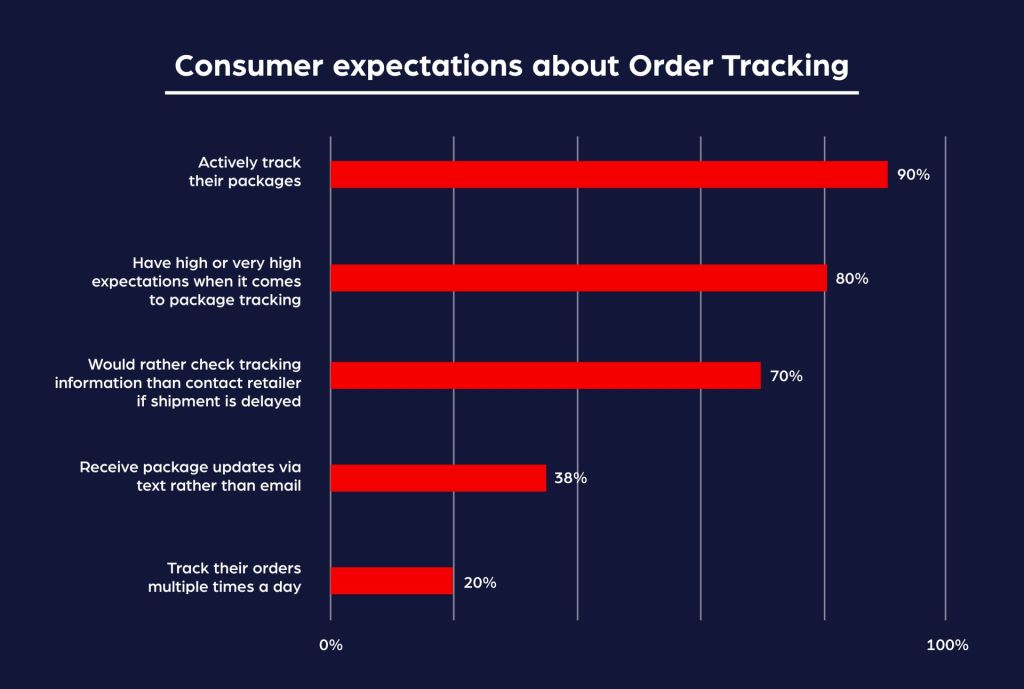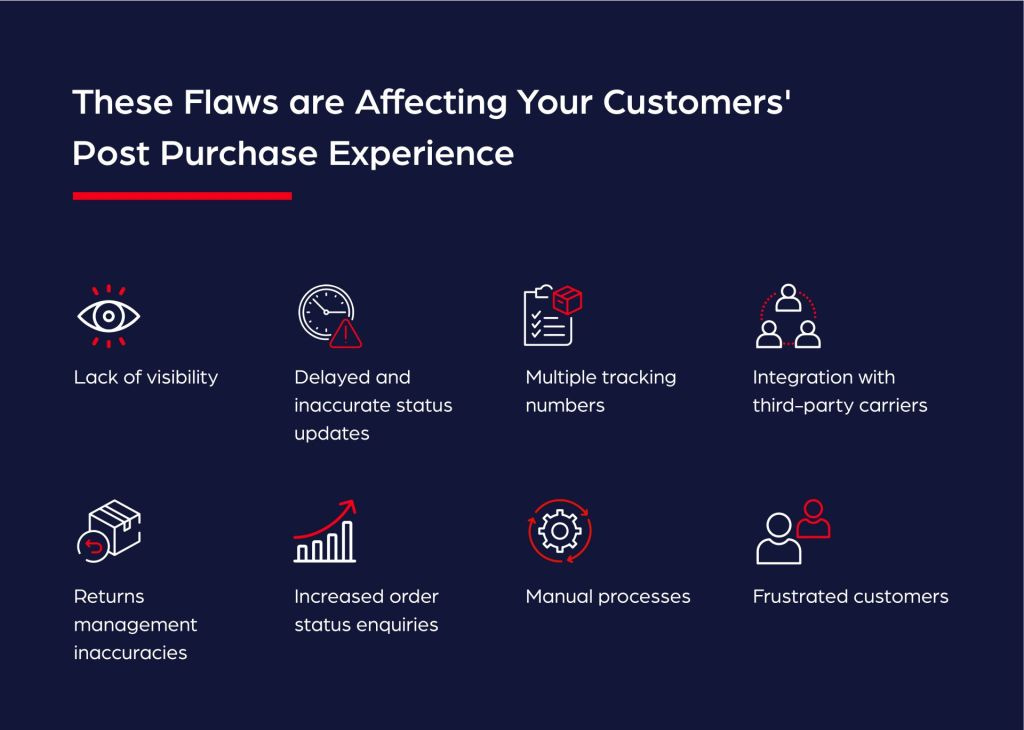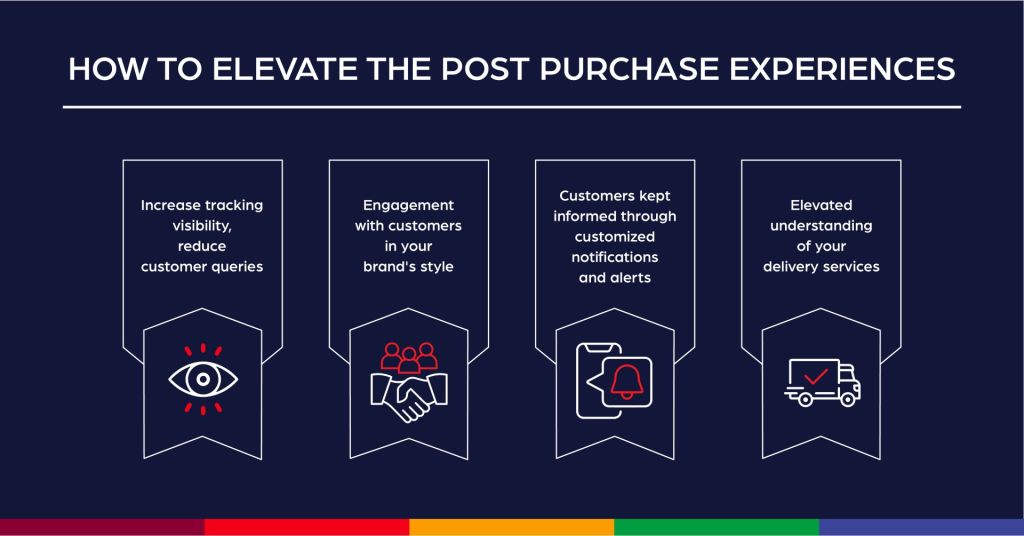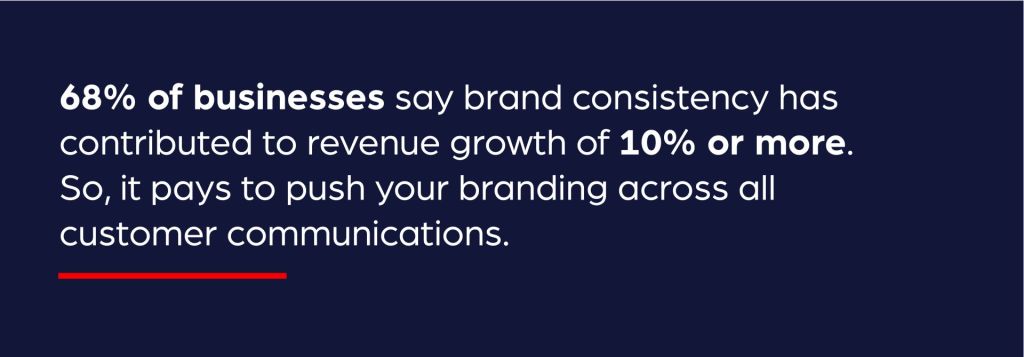Post Purchase Experience: Why It Matters & How to Master It
Guides
The moment a customer clicks “buy” on your website, their journey with your brand has only just begun. Many businesses focus on making the sale, but what happens after the purchase often determines whether a customer becomes loyal or never returns.
The post purchase experience has emerged as a critical battleground for customer loyalty, given the competitiveness of e-commerce today. With consumers having endless options at their fingertips, the brands that succeed are those that understand one fundamental truth: the sale is just the beginning of the relationship, not the end.
In this guide, we will explore what the post purchase experience truly encompasses, why it matters more than ever, and how you can master this phase to transform one-time buyers into lifelong customers.
Why the Post Purchase Experience Matters
The post purchase experience serves as the foundation for long-term customer relationships and business growth. This phase directly impacts customer satisfaction, loyalty, and your brand’s reputation in the competitive e-commerce space.
Here’s what the numbers tell us:
- Nearly 70% of consumers expect order tracking when buying products online [1]
- 56% say it’s a top consideration when ordering luxury items
- 82% of respondents claim end-to-end tracking is significantly more important when buying internationally [2]
These statistics reveal just how much consumers prioritize order tracking and visibility. When customers make a purchase, their excitement peaks and so does their anxiety about order fulfillment. A well-managed post purchase experience transforms this anticipation into satisfaction, while poor execution can quickly erode trust and damage relationships.

Sources: Forbes[3]
Key Components of a Positive Post Purchase Experience
Creating an exceptional post purchase experience requires attention to several critical components. All of these work together to meet or exceed customer expectations. Let’s take a look at each of these components below:
1. Transparent Communication and Tracking
Clear, consistent communication forms the backbone of a positive post purchase service. To deliver efficient communication, first understand what your customers want to know. They usually expect details on:
- Estimated arrival times
- Current package locations
- Shipment history and movement
- When items leave stores or distribution centers
- Return tracking details
Providing this information proactively reduces anxiety and builds trust.
2. Proactive Issue Resolution
Anticipating and addressing potential problems before they impact customers demonstrates exceptional service. This includes monitoring for delivery delays, weather-related issues, or carrier problems, then communicating solutions before customers need to inquire.
3. Personalized Touch Points
Customizing communications to reflect your brand identity while providing relevant information creates memorable experiences. This includes branded tracking pages, personalized email notifications, and targeted content that adds value beyond basic order updates.
4. Seamless Returns Process
A hassle-free returns experience is crucial for customer confidence. Clear return policies, easy-to-use return portals, and transparent return tracking help maintain positive relationships even when purchases don’t meet expectations.
What’s Derailing Your Customer’s Post Purchase Experience
As mentioned, the post-purchase period is the time when customer excitement is at its peak and the desire to know where their orders have reached is also immense.

Source: Businesswire[4]
However, poor parcel tracking has the power to turn this highly anticipated journey into a frustrating experience.
Here are the most common issues that derail customer satisfaction:
- Difficulty managing WISMO queries
The overwhelming number of “where is my order” queries from customers often adds pressure on your customer success teams. Finding the information customers need takes time. And with many consumers asking the same question, errors and miscommunication are guaranteed outcomes, frustrating consumers. The sheer volume of WISMO queries can cause your team to delay answering other queries, leading to unhappy customers.
- Increased customer churn and decreased revenue
When customers make a purchase, they expect reliable and accurate parcel tracking. If the tracking information is inadequate or inconsistent, it fails to meet their expectations. A lack of reliable tracking updates and holistic post purchase experience lowers their trust and loyalty toward your brand.
- Damaged reputation and low CSAT score
Frustration, anxiousness, or inconvenience caused by insufficient delivery updates fuel negative reviews and ratings on marketplaces and online stores. These reactions are damaging to your reputation as they raise doubts about your business’s reliability and competence.
- Increase in order cancellations
Customers value transparency and clear communication throughout the order fulfillment process. If customers feel left in the dark about the status of their orders, they may opt to cancel out of dissatisfaction with the overall experience. If tracking problems persist despite multiple inquiries or attempts to resolve the issue, customers may consider the brand inefficient, which erodes trust and prompts cancellations.
- No visibility on exceptional situations
In the event of unexpected situations or instances where parcels go missing, get damaged, or are destroyed in exceptional scenarios, visibility of these situations is essential. No visibility in such instances can impact end consumer experiences and your revenue. For example, if a package is delayed, customers may need to change their plans accordingly. But, poor parcel tracking systems that do not provide visibility on exceptional situations make it challenging for customers to anticipate or plan for such contingencies.
Lionel Berthe, Head of Asia-Pacific, Asendia says, “We had different parcel tracking software. One of the challenges we experienced was depending on the clients we had multiple sources of information. Without our single main source of information we had trouble absorbing multiple tracking events and extracting the information we wanted.”
- Dependence on manual order tracking
Without a proper parcel tracking system in place, you become reliant on manual tracking processes. Tracking a parcel’s location takes longer in this case as there is continuous back and forth between your brand and delivery partners. Another hurdle your customers face is the continuous need to contact you for tracking updates. This is frustrating and incredibly inconvenient.
- Confusion caused by different data exchange formats from multiple carriers
If your business works with multiple carriers that use different tracking platforms or systems, customers may need to navigate through various interfaces to track their orders. Each platform may have its own user interface, features, and terminology, making it challenging for customers to track their packages consistently. This fragmentation can result in confusion and frustration. Moreover, you miss out on the potential to generate additional revenue through a guaranteed sale.
- Restrictions in scaling up business
Poor parcel tracking may cause you to spend more manual efforts, resources, and time to address tracking-related inquiries or issues. These situations will hamper your revenue and growth in the market.
Common Parcel Tracking Flaws That Affect the Post Purchase Experience
By now, it’s quite clear that the post purchase experience plays a critical role in shaping customer satisfaction and loyalty. However, by overlooking flaws in your parcel tracking, you are significantly impacting customer experience. Like you, many brands and marketplaces fall into the trap of accepting the flaws in their parcel tracking software, unaware of the detrimental effects these can have on customers. Here are some of the challenges that need immediate rectification:

a. Lack of visibility
Customers may not receive enough updates about the status of their orders, such as shipping and delivery times, which can cause confusion and disappointment. Customers rely on accurate tracking information to plan their schedules and make necessary arrangements for receiving their orders. Without visibility into the estimated delivery time or updates on any delays, customers may struggle to plan accordingly.
b. Delayed and inaccurate status updates
Delays or errors in order status updates can lead to frustrated customers. It can be especially challenging to map the correct status of each order when different carriers provide conflicting information. Lags in system updates, inconsistent data synchronization, and conflicting information from different carriers are the main causes of this challenge.

Sources: Oberlo[5]
So, a negative experience will more than likely have the reverse effect on a customer which will lead to little or no repeat customers.
c. Multiple tracking numbers
When orders contain multiple items with different tracking numbers, it can be difficult to keep track of all the updates and ensure that they are accurate. Customers may need to track multiple shipments simultaneously, leading to increased complexity and potential confusion. As a brand or marketplace, this fragmentation can make it difficult for you to consolidate the tracking data and provide customers with a centralized and comprehensive view of their entire order’s progress.
d. Integration with third-party carriers
Integrating the tracking systems of third-party carriers with your order tracking system can pose technical and logistical challenges, which may result in delays and errors. For example, integrating tracking systems from different carriers requires establishing compatibility between various data formats. Moreover, each of your carriers may have their own processes, infrastructure, and tracking mechanisms. Integrating these systems into a cohesive and seamless tracking experience can require significant effort and coordination.
e. Returns management inaccuracies
When customers initiate returns or exchanges, it is essential to ensure that the tracking information is accurately updated and that the correct items are being returned. If tracking information is not accurately updated or is delayed, customers may experience frustration and uncertainty regarding the status of their return and the resolution process.
f. Manual tracking processes
When order tracking relies on manual processes, it can be labor-intensive and prone to errors, which can cause delays and increase the risk of customer complaints. Communication gaps can also occur between various stakeholders, including carriers, fulfillment centers, and customer support teams. And manual processes become increasingly challenging to manage as the volume of orders grows.
As your business grows the manual tracking process also becomes tedious. And without accurate tracking reports and communication, your scalability is limited. Sustainable order tracking practices are essential to boost your expansion and keep customers coming back.
4. Elevate Post Purchase Experience with Parcel Tracking Software
From your perspective as a brand or online marketplace, providing advanced order tracking information can be challenging, especially through manual processes. Fortunately, you can master e-commerce parcel tracking with software solutions specifically adapted to offer a great post purchase experience.

a. Increase tracking visibility, reduce customer queries
With e-commerce parcel tracking technology, you can track parcels in real time, providing accurate and up-to-date information on the whereabouts of each package. This enables you to confidently answer customer inquiries about their orders, eliminating the frustration of not knowing the status of their deliveries. With a unified view of all parcels across multiple carriers, you can easily provide customers with timely updates about the movement of their packages. With a unified view of all parcels across multiple carriers, you can easily provide customers with timely updates, significantly reducing WISMO queries.
b. Engagement with customers in your brand’s style
Advanced e-commerce parcel tracking software allows you to create customized tracking pages and emails that reflect your unique brand identity. This branded communication features your business logo, messaging, and colors, enabling a consistent and immersive customer experience.
By incorporating your branding into the tracking page, you can reinforce your brand image and create a sense of familiarity and trust with customers. This personalized touch enhances the overall post purchase experience and strengthens your customer relationships.

Source: Oberlo[6]
A branded parcel tracking experience can offer marketing potential too. With a branded tracking URL, you have the opportunity to upsell and cross-sell. A branded tracking page offers an ideal space for targeted marketing. You can also use this page to offer exclusive promotions and provide links to your social media platforms to generate an additional revenue stream.
c. Customers kept informed through customized notifications and alerts
The right parcel tracking software can allow you to set up customized notifications and alerts for your customers via email.
Advanced parcel tracking software will help you create notifications that are branded, white-labeled, and aligned with your visual identity.
Through these custom email notifications your customers can be updated on time regarding their parcel status, keeping them informed throughout the delivery period. Personalized notifications enhance communication, manage customer expectations, and contribute to a positive post purchase experience.
Sources: Forbes[7]
d. Elevated understanding of your delivery services
With valuable analytics and reporting features provided by parcel tracking software you can track key performance metrics, such as shipment status, carrier performance, notification analytics, and exception management. By monitoring these metrics, you gain insights into delivery performance, you can identify areas for improvement, and make data-driven decisions to optimize post purchase experiences. Analytics also enable your business to gauge customer satisfaction, measure Net Promoter Score (NPS), and identify opportunities for enhancing the overall customer journey.
Today, Asendia uses a more robust parcel tracking system to help clients improve post purchase experiences.
Lionel Berthe, Head of Asia-Pacific, Asendia, says, “We have to follow 1 million parcels a week and each of those parcels have around 10 to 20 events that must be tracked. With a robust system, we have better tracking solutions to offer our customers, and they have better interactivity with the final customers – the shopper.”
5. Conclusion
Your post purchase experience can make or break customer relationships. While attracting new customers requires significant investment, keeping existing ones happy often comes down to how well you manage the critical period after they click “buy.”
The good news? Most post purchase challenges stem from common issues that proven technology can solve. Whether it’s reducing WISMO queries, providing transparent tracking, or creating branded experiences that reinforce your identity, the right parcel tracking solution addresses these pain points systematically.
Ready to transform your post purchase experience? Discover how Anchanto’s parcel tracking solution can help you master the art of post purchase excellence.
FAQs
1. What is the most important element of a post purchase experience?
Transparent communication stands as the most critical element. Customers want to know where their orders are at all times, with proactive updates about delivery status, potential delays, and any issues that arise. Real-time tracking information reduces anxiety and builds trust, making it the foundation of any successful post purchase strategy.
2. How can I reduce WISMO (Where Is My Order) queries?
The best way to reduce WISMO queries is through proactive communication and comprehensive tracking visibility. Implement automated notifications that update customers at key milestones, provide branded tracking pages with detailed information, and send alerts about delays before customers need to ask. Quality parcel tracking software can reduce WISMO queries by up to 70%.
3. What are some post purchase experience examples that work well?
A strong post purchase experience combines clear communication with thoughtful touches. This includes timely updates, surprise perks like faster shipping, and well-designed packaging that makes unboxing enjoyable. Simple follow-ups such as thank-you notes or product tips also help customers feel valued and more likely to return.
4. How does poor post purchase service impact my business?
Poor post purchase service directly impacts your bottom line through increased customer churn, higher support costs, and damaged reputation. Studies show that businesses with poor post purchase experiences see 15-20% higher customer acquisition costs and 25% lower customer lifetime value. Additionally, frustrated customers are three times more likely to leave negative reviews that deter future buyers.
5. What’s the difference between post purchase experience and post purchase customer experience?
While often used interchangeably, post purchase experience typically refers to the broader journey from purchase to delivery and beyond, while post purchase customer experience focuses specifically on how customers feel and interact with your brand during this period. Both concepts emphasize the importance of managing customer relationships after the sale to drive satisfaction and loyalty.
References –
[2] – Dhl.com – 2022 European Online Shopper Trends
[3] – Forbes.com – Navigating The ‘New’ Supply Chain: How To Deliver On Your Promises With Technology
[4] – Businesswire.com – Verte Research Reveals Consumers Are Obsessed With Order Tracking, Visibility
[5] – Oberlo.com – 10 Customer Service Statistics You Need to Know in 2023
[6] – Oberlo.com – 10 Branding Statistics You Need to Know in 2023
[7] – Forbes.com – How To Use Order Tracking To Boost Ecommerce Sales
